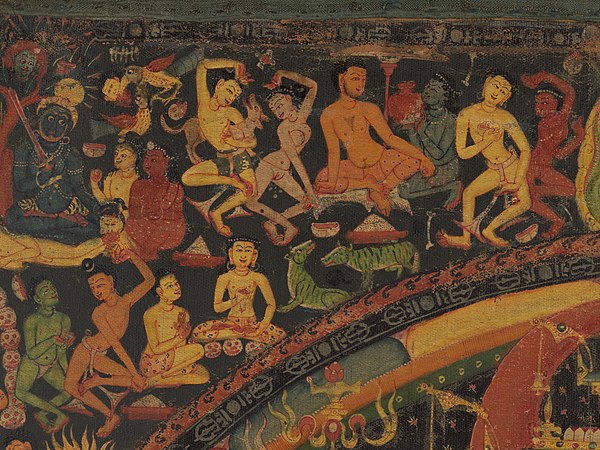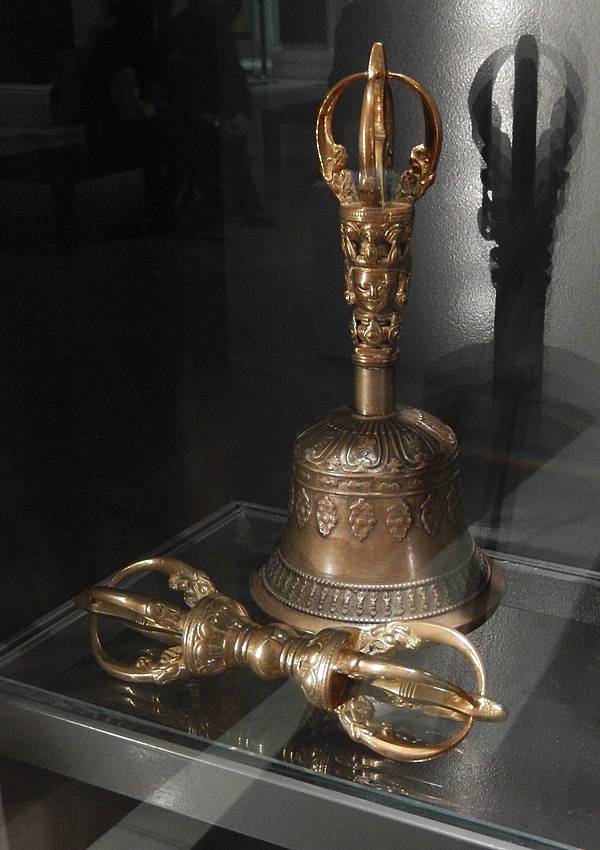Vajrayana
Videos
Page
Vajrayāna, also known as Mantrayāna, Mantranāya, Guhyamantrayāna, Tantrayāna, Tantric Buddhism, and Esoteric Buddhism, is a Buddhist tradition of tantric practice that developed in the Indian subcontinent and spread to Tibet, Nepal, other Himalayan states, East Asia, and Mongolia.

A vajra and bell (ghanta), which are classic ritual symbols of Vajrayāna

Mahasiddhas, Palpung monastery. Note the figure of the great adept Putalipa at center, seated in a cave and gazing at an image of the meditational deity Samvara and the figure at the bottom left holding a skull-staff (khaṭvāṅga) and a flaying knife (kartika).

Diamond Realm mandala, based on the tantric Vajrasekhara Sutra, and symbolizing the final realization of Vairocana Buddha in Shingon

Naked tantrikas dancing and eating from skull cups (kapalas), closeup of a Chakrasamvara mandala
Vajra
Videos
Page
The Vajra is a legendary and ritualistic weapon, symbolizing the properties of a diamond (indestructibility) and a thunderbolt.

A Tibetan vajra (club) and ghanta (bell)

Mahakala holding a kartika with a half-vajra handle

Indra's vajra as the privy seal of King Vajiravudh of Thailand

Five Vajrayana ritual objects at Itsukushima Shrine: a five-pronged short club (vajra) (五鈷杵, gokosho), a pestle with a single sharp blade at each end (独鈷杵, tokkosho), a stand for vajra pestle and bell (金剛盤, kongōban), a three-pronged pestle (三鈷杵, sankosho), and a five-pronged bell (五鈷鈴, gokorei).